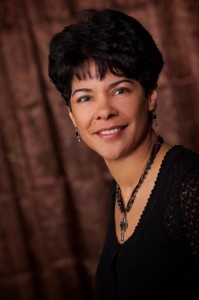
Total Participation Techniques
 Total Participation Techniques (TPTs) are teaching techniques that provide teachers with evidence of cognitive engagement and active participation from all students at the same time (Himmele & Himmele, 2011). The three key phrases in that sentence have been italicized. They are Evidence, Cognitive Engagement (using higher-order thinking), and Active Participation. So how does a teacher plan for getting all those things at once? There are simple techniques that can help.
Total Participation Techniques (TPTs) are teaching techniques that provide teachers with evidence of cognitive engagement and active participation from all students at the same time (Himmele & Himmele, 2011). The three key phrases in that sentence have been italicized. They are Evidence, Cognitive Engagement (using higher-order thinking), and Active Participation. So how does a teacher plan for getting all those things at once? There are simple techniques that can help.
One of these techniques is called a Picture Walk. Typically when teachers think of a picture walk, they imagine showing primary students the pictures of a book that will be read in small groups. Picture Walks are great for predicting what stories will be about, and for increasing curiosity and inquiry within students prior to a story being read. Instead, we’ll be referring to content area picture walks. The Content Picture Walk (Himmele & Himmele, 2009) uses enlarged images from your classroom textbooks. The images are displayed around the room so that small groups of about four students can assemble around the picture and address prompts that are specific to the pictures. After a few minutes, students record their responses to the prompts on post-its and place them near the picture. At a signal from the teacher, students then circulate to the next picture.
Picture Walks work great before or after units are taught, and they work in many different content areas. In the attached image, students are examining Civil War images scanned from a history text. They are addressing two specific prompts 1) What do you think is happening in the picture? 2) Why do you think it is important enough for the authors to have included in our history text? For content picture walks, these two prompts can offer opportunities for deep discussion not only related to retelling history, but also for understanding the relevance of important moments in history.
The Content Picture Walk provides all three of those things:
1) Evidence– based on what students write.
2) Cognitive Engagement– using higher-order thinking that is dependent on the prompts you use.
3) Active Participation– all students have a task to complete, and their participation is visible.
As you plan, be thinking of ways to get total participation from your students that will provide you with the three ingredients above. Not only will student learning increase, but they’ll be enjoying it at the same time!
Himmele, P. & W. Himmele (2011). Total Participation Techniques: Making every student an active learner. Alexandria, VA: ASCD.
Himmele, P. & W. Himmele (2009). The Language-Rich Classroom: A research-based framework for teaching English language learners. Alexandria, VA: ASCD.
Dr. Pérsida Himmele is an associate professor in the education department at Millersville University in southeastern Pennsylvania. She has been a K-8 teacher in bilingual and multilingual classrooms in New York and southern California. She has also served as a district administrator and as a national and international consultant to educational entities in China, Nepal, Argentina, Venezuela, Tonga, the United States and Canada. Pérsida has a Ph.D. in Intercultural Education, and a Masters in Bilingual & Elementary Education. She and her husband coauthored the books Total Participation Techniques: Making every student an active learner, and The Language-Rich Classroom: A research-based framework for teaching English language learners.
More information on Total Participation Techniques can be found in Dr. Pérsida Himmele’s book.
Click on the book cover


Leave A Reply (No comments so far)
The comments are closed.
No comments yet